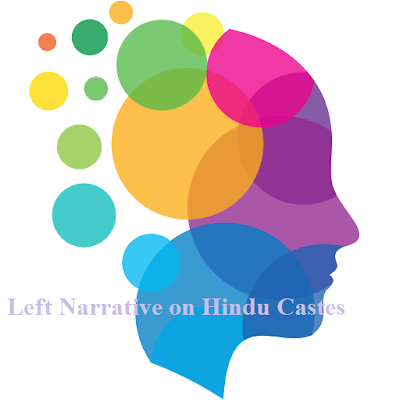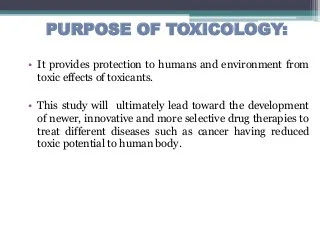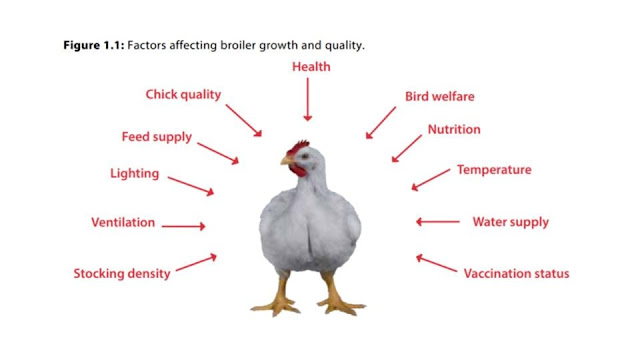19 Facts and Myths about Hindu Caste System in India FAQs
19 Truth and Propaganda about Caste System of Hindus in India (Frequently Asked Questions)
The Indian caste system is one of the oldest social structures in the world. The system of dividing Hindus into powerful groups based on their karma (work) and dharma (Hindi word for religion, but here it means duty). Hindu scholars believe that this karma based system is several tens of thousands of years old based on proven facts, while others generally believed it to be more than 3,000 years old with just wild imagination.
Q1. Are castes and varnas the same?
Ans. Caste and varnas are technically different but used as the same these days. Castes represent differentiation form one another creating whole different entities after differentiation whereas varnas represent integral components of the whole. Harvard University is often charged with creating propaganda by activists and scholars such as Rajiv Mehrotra. Some scholars also believe that some Abrahmic religion based rich gulf countries heavily fund caste system and try to make people believe that it is a part of religion in order to weaken Hinduism by creating divide on the pattern of black and white races in order to ease conversion.
Q2. Is it true that according to Hinduism no one can change Hindu caste but can change religion?
Ans. This is untrue that according to Hinduism no one can change Hindu caste but can change religion. But it is true that according to the Indian constitution no one can change Hindu caste but can change religion. This is, as if an OBC wants to become an SC he is disallowed by the law and constitution as then he would take SC reservation advantage also. Thus, caste discrimination can never be found in Hinduism but only in the Indian constitution.
Hinduism allows even the people coming in form other religions to join any caste then it is impossible that any caste can be disallowed by the religion. Recently, a former Muslim Waseem Rizvi became a Hindu and became a Brahmin.
A BBC interview posted online on 22 September of 2022 shows a Muslim Naushad became Hindu and again became a Muslim and got support form all Jats (a Hindu segment people) even when he reverted to Islam. The interview shows that on being asked that people joining Hinduism have a problem of which caste they would get, the person replies that anyone can take any caste of their own choice.
It is also true that Hinduism is not a politicized religion with any central authority as Pope or likewise. Thus, no one objects but accept any caste anyone wants, and are happy with any religion a person want for themselves.
It is also that in Hinduism it is not a religious duty of Hindus to try to convert any people to become Hindus. Thus, they willingly never want anyone to convert to their religion as there is no motivation, but also do not protest if anyone does. There is only motivation to serve all humanity, all Godly creation that is what is Sanatan and this is the reason why they worship everything as a gratitude. This worship is of a gratitude nature and not of worshiping the almighty where there is worship of the supreme power, as in case of cow worship due to its facilitating milk just as their mothers did, and hence called mother cow.
Cow worship is not actually worship but merely offering gratitude to cow for providing milk to Hindus as their mothers did when they were children. The same sort of gratitude is offered to teachers and elders but cant be termed as worship of almighty. This is what is peculiar to Hindu culture to be so grateful to anyone for anything worthy.
Left sets a risible narrative that cow worship is worship of cow god, which wise Hindus only laugh away.
Q3. How was the Hindu caste system born?
Ans. Caste system was the natural outcome of people carrying out
their ancestral work and living in the communities performing the same work.
But the left ideology is that Manusmriti, which is generally considered to be
the most important and authoritative book in Hindu law and which dates back to
at least 1000 years before the birth of Christ, understands and upholds
the caste system as the basis of the system and organization of society.
The fact is that there are accusations that the left has manipulated
subordinate scriptures according to their requirements and try to ascertain
their worth according to their requirements.
Left is of the habit of setting bogus narrative which Hindus
never believe and can never believe. It is against the very rudimentary Hindu
ideologies. Here, only Hindus are not ascertaining their religion but only the left
people are.
Fact is that the most well known Rishi was a kshatriya viz. Vishwamitra, proving not dynasty but karma was caste determinant. So what we find in Hinduism is totally different form the propaganda.
Q4. How many castes are the there in Hindus?
Ans. Religiously, there are no castes as in modern times, among Hindus, but only 4 varnas.
The varna system divides Hindus into 4 groups:
- Brahmins
- Kshatriyas
- Vaishyas
- Shudras
Many believe that the groups are derived from Brahma, the Hindu God of nature.
Being carried away by the left propaganda and other
religions take it very literally.
Q5. How does left represent hierarchy in Hindus?
Ans. Left attempts to show the division based on karma as division
based on dynasty, creating a hierarchy, rather than equal segments as:
- At the head of the hierarchy were Brahmins who were mainly teachers and intellectuals and believed to have descended from the head of Brahma.
- Then the Kshatriyas, or warriors and rulers, who are supposed to have come from him.
- The third place went to the Vaishyas, or merchants, who were created from his thighs.
- At the bottom of the heap are the Shudras, who came from the feet of Brahma and did all the evil work.
Q6. How does propaganda entities show Indian caste system?
Ans. The propaganda entities show Indian caste system as:
The castes are divided into about 3,000 castes and 25,000
sub-districts, each according to its function.
Outside the framework of these Hindus are the achhoots, the
Dalits or untouchables.
The fact is that there may be any number of castes and
sub-castes but in Hinduism there is no word as dalit. This word has been tossed by the religious conversion
enthusiasts and political nexus.
The untouchability has never been in Srimad Bhagwad Gita,
Vedas and the Upnishads. So it was almost impossible to set a bogus narrative as
these are religious books. So to establish their narrative left brought in only
memories by any of the saintly people, and that too manipulated them. When
such scripts are no how in synchrony with the Hindu scriptures i.e. Srimad
Bhagwad Gita, Vedas and the Upnishads, they can never be Hinduism even if we
assume it to be really written by some sort of Hindu saint, and not manipulated by the
left.
Hindu God incarnation Lord Krishna himself proved equality of all castes or varnas, and that they are based on karma and not dynasty. However, the Indian constitution proves otherwise.
Lord Krishna was:
- Born as Kshatriya
- Traded milk and milk products as a Vaishya
- Became Arjuna's Mahabharat charioteer as a Shudra
- Advised Arjuna (Gita Updesh) as a Brahmin Guru
Q7. Is the Hindu caste system legal?
Ans. The constitution of independent India is said to have abolished caste-based discrimination. In an attempt to redress historical injustices and provide a level playing field for those who did not practice its culture.
The
authorities imposed restrictions on discrimination in government services and educational
institutions for the Scheduled Castes and Tribes, the lowest and upper castes in the 1950s.
The above is as propagated while the fact is that in Hindu religious text reference there is no discrimination while constitution creates this discrimination that is why different treatment to different castes in its schedule. This is how caste system got legally established.
Q8. When did OBC quota came into existence on the basis of caste?
Ans. In 1989, the quotas were extended to include a group called OBCs (Other Backward Classes) who fall between the traditional upper and lower castes.
In recent decades, due to the spread of secular education and
increasing urbanization, the influence of race has diminished somewhat,
especially in communities where people of different races live together and
marrying, is increasing.
In some southern states and the northern state of Bihar, many people started using the same name after the social reform movement.
Despite the changes, caste identity remains strong and surnames often reflect the caste a person belongs to.
Q9. How does the Hindu cast system work?
Ans. For centuries, caste has determined almost every aspect of Hinduism and social life, with each group occupying a place in this complex hierarchy.
Rural communities have long been organized along caste lines since Mughal invasion. Mughals did it according to their divide and rule policy as they were very few in number and had to divide the society. British needed the same mass control so followed the suit.
Upper and lower castes almost always live in separate areas, wells are not
shared, and Brahmins are not allowed food or drink. descended from Shudras, a
person could marry only within his family. This system gave many privileges to
the upper castes while supporting the opposition of the lower castes by the
privileged groups.
Q10. Are Dalits in India supported by all Hindus or discriminated with?
Ans. Often criticized for being unjust and inflexible, the caste system remained unchanged for centuries since Mughals, locking people into a set of social rules that it impossible to escape. However, despite the obstacles, some Dalits and other low-income Indians, such as:
- BR Ambedkar, publicized to be the author of the Indian Constitution
- Draupadi Murmu (ST), current Indian president
- KR Narayanan who became the country's first dalit President, rose up in 'a high position in the country
This all happened with absolute Hindu support only.
Q11. Can there be any caste discrimination possible?
Ans. Of course there can be caste discrimination as there is nepotism everywhere. If anyone gets a good work they want their close relatives to get that good and beneficial work forever. But as far as religion is concerned, it is disallowed. Nepotism is humane.
There are nepotism accusations on Bollywood, similarly there are claims on higher judiciary that only about a couple of hundred dynasties are always chosen as judge by the collegium. Thus, there is possibility of people holding beneficial castes for themselves and hence dynasty wise caste system, in defiance of the tenets of religion.
Q12. How does politics affect the caste system in India?
Ans.
Politics transforms the varna system to the caste system for
political gains. When gains are attached to something then it becomes
inevitable. It is in the political interest of the politicos to create caste
discrimination and then prove it, otherwise they lose ground. So its a matter
of their existence.
Some
caste based activities:
In
recent years, many communities have demanded recognition as OBCs.
In
the year 2015 there were and massive protests by the Patel community in Gujarat
demanding access the limits of caste.
In
the year 2016 there were violent protests by the Jat community in Haryana.
Jat
protesters block roads in Haryana state, northern India. At least 18
people have died in Jat community protests in Haryana
Both
are politically prosperous castes, but they justify their demands for caste
restrictions by saying that most of their communities are poor and suffering.
Some
say that the seizure process would have disappeared if it were not for the
politicians who make this fire happen regularly.
In
the general election, many people still vote candidates of own caste seeking
electoral benefits. As a result, what was intended to be a short-term
action plan to get the majority of people out of office has become a vote-bank
creation exercise for many politicians.
Q13. Have any Hindu saints been from Shudra caste?
Ans.
Author of Ramayan is Maharshi Valmiki which is in shudra category.
In olden days varna was determined by karma or the work one
performed. However, to this also fake news mongers try to undermine shudra for
reinforcing the political scenario they created as Wiki pages, etc.
Mahabharat
author Vyas of his vyas community was a shudra as varna was
not determined by birth but by karma or deeds performed.
The
irony of politics is that people under shudra community are
taught to claim that their ancestors wrote Indian Constitution which was
written by 3 member British cabinet because of Dr BR Ambedkar presiding one
committee while all others presided by Dr. Rajendra Prasad. While Dr. Ambedkar
himself said that people say he wrote constitution but he never wrote the
constitution and would burn it at the very 1st chance he got.
Such is the impact of propaganda that claiming that never existed (ancestors being authors of Constitution) and disowning (ancestors being authors of Ramayan and Mahabharat) the claim and giving it to Brahmins. Now why not glory become the opposite.
Though
fake news mongers since the time of Mughals and Turks try to set a wrong notion
that the above are Brahmin caste text. Of course any one was and is allowed to
perform Brahmin work as his karma is not hereditary which even continues by and
large these days, except few villages which remained under Mughal and Turks
impact.
Mughal and Turks got close to more authoritative people in those times and gave them more significance like Brahmins and others and neglected shudras as they being poor. Thus, caste system cropped in despite no how present in Hindu religious and guide books Gita, Vedas and Upnishads.
Q14. Are any modern Hindu saints of Shudra or backward castes?
Ans. The fact is that almost all top Hindu saints in modern times are from Shudra varna
as evident below:
Few Top
Hindu Saints under Shudra varna, referred by the Indian constitution as SC/ ST/ OBC:
|
Asaram Bapu
Swami Nityanand
Swami Chinmayanand Dati Maharaj
Sant Ganeshwar
Sadhvi Pragya
Sadhvi Ritambhara
Sadhvi Uma Bharti
Baba Ram Dev
Jai Gurudev
Sadhvi Prabha
Sadhvi Chidarpita
Gurmeet Sigh Ram Rahim
Sant Rampal
Sakshi Maharaj
|
SC / Dhobi Sindhi
SC
SC
SC SC
SC
OBC / Lodhi
OBC / Lodhi
OBC / Yadav
OBC / Yadav
OBC / Yadav
OBC / Maurya
OBC / Jat
OBC / Jat
OBC / Kurmi Patel |
|
Brahmkumari Lekhraj Bachani |
Sindhi Baniya |
|
Osho Rajnish Ma Nirmala Devi |
Jain |
Thus, we see that those who stuck to their own religion are
with glory on the top of their own religion, while those who went to others’ religion are only doing pratigya (the 22 pratigya) or becoming pasmanda.
Same way, Brahmins always stuck to their religion and hence without any reservation are so competitive that are on the top positions in their country. This shows the proverb dharmo raskshati rakshitah live:
धर्म एव हतो हन्ति धर्मो रक्षति रक्षितः ।
तस्माद्धर्मो न हन्तव्यो मा नो धर्मो हतोऽवधीत् ।
Q15. Is there any evidence that caste based atrocities are a reality?
Ans. Caste based system has been a reality only
under Mughal and Turks followed by British with they in power.
With Hindus in power it is not apparently possible
as evident these days, as Shudras also called bahujan (majority). So, people under almost 80% majority can always foil any
atrocity bids, and those as propagated is not possible under such a large
number of people except in propaganda.
There is no verified evidence before Mughals and
Turks that can prove the claimed atrocities. However, better equipped class is
just better equipped and treated well by all while deprived are not, regardless
of any caste or any such identification,
Q16. What is the difference between Shudra varna Hindus who convert and those who choose to stay in their originality?
Ans.
The ordinary shudras who converted or who supported the
concept under dalit politics, except politicians, went under
heavy losses like:
- Lost their originality and
dynasty identity.
- Named as dalit (downtrodden), which
is an inferior term despite never such names imposed under Hinduism on any varna.
- The new religion never gave
them the status as has been always in their original religion, like Pasmanda Muslims
who are not allowed among higher castes and even never allowed to enter
high firka mosques. The same Mughal
philosophy crept among Hindus as planted by them but as it has no
religious reference is elapsing, but not among other religion people where it is
inherent.
- The new religion considers them
as really backward thereby only migrating to their new religion so branded
as such, though in original Sanatan there has been no such situation
except brought under Mughal and Turk influence which almost has elapsed
now except for few villages.
While ordinary shudras who
never converted or who supported the originality concept under dalit politics,
except politicians, went under heavy benefits which can be inferred a opposite
to the above damages.
This
shows the text reference of Srimad Bhagwad Gita showing live as "Even death in own
religion is ascent of the human, while following others' religion is full of fear
and cowardice"
तस्माद्धर्मो न हन्तव्यो मा नो धर्मो हतोऽवधीत् ।
Q17. Have low caste before Mughal times ever been at the top?
Ans. Thousands of years ago, even before Christ, akhand bharat (unified India) Emperor was Chandra Gupt Maurya (a Shudra) and was a disciple of Acharya Chanakya who became Royal after unifying India, the largest Kingdom in ancient Indian peninsula. That was the largest kingdom ever made by any Indian and hence its emperorship was the top most position ever in Indian context, and that position was held by Maurya which was later treated as low caste after Turks and Mughals. Thus we see that the biggest Hindu emperor ever was a Shudra.
The evidence shows that Maurya community was at the top while upholding his own religion, but after Mughals the community declined with Mughal and Turk impact under caste politics.
18. Were
Ans. If we consider the authors of Vedas itself, we, in the very 1st Ved find one of the authors as Sudas. There are many surtas written by Sudas (सुदास के सूत्र ) who was a shudra himself. Thus, we obviously know the answer.
Q19. What is Malkani Committee report about the Indian or Hindu caste system?
Ans. Malkani Committe states that until the advent of Mughal era, racism was very rare for Indians, social identity was often changing, and people were able to move between the castes. This committee clearly exposes the fact that the discriminatory caste system was propagated by extraneous invaders. Malkani Committee was set up by the Indian government but not much publicized by the government itself due to caste politics.
Conclusion
Unbiased historians say that until the advent of Mughal era, racism
was very rare for Indians, social identity was often changing, and people were
able to move between the castes. The same is backed by Malkani Committee set up by the Indian government but not much publicized by the government itself due to caste politics. Left and Abrahamic (except Jewish) backed studies shows that the British colonial
authorities imposed strict boundaries that defined India's social identity when
they simplified the system with simple numbers, which are the intention to create a
society with common rules that can be easily controlled. However, this is absolutely unjustifiable as there is a conflict of interest as the British would naturally never go against their interests and must diverge the mass rather than unifying them.















